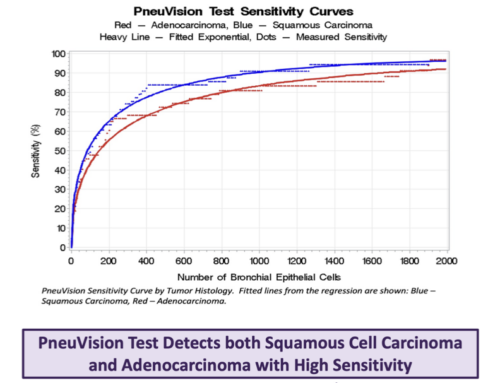VisionGate Presents at the World Conference on Lung Cancer for 2017 in Tokyo: Cell-CT® Differential Detection of Dysplastic Bronchial Epithelial Cells from Patient Explants

IASLC Dysplasia Abstract
Cell-CT® Differential Detection of Dysplastic Bronchial Epithelial Cells from Patient Explants
Authors: Sussman, Meyer, Katdare, Presley, Lakers, Bell, Reyna, Hamilton, Miller, Ghosh, Nelson
Background: Chemoprevention could have a great impact on lung cancer prevention. While Iloprost treatment has shown a significant reduction of dysplasia in former smokers, the identification of patients who would benefit from the drug is seriously hampered due to the need to use invasive diagnostic procedures in patients who are typically asymptomatic. Published clinical data shows that non-invasive sputum analysis using the Cell-CT platform detects early stage lung cancer with high sensitivity (92%) and specificity (95%). This abstract reports the development of cell classifiers that distinguish cultured human lung dysplastic explants from malignant and normal sputum cells. This study represents a first important step toward developing a non-invasive diagnostic test for detecting patients with moderate to severe bronchial dysplasia who may then be treated with chemopreventive drugs such as Iloprost.
Methods: To achieve diagnostic classifications, sputum from patients without lung cancer (“normal cells”), small cell lung cancer and five adenocarcinoma cell lines, and cultured bronchial explants from three patients with moderate to severe dysplasia were analyzed using the Cell-CT.
Results: 15,000 normal cells from sputum, 500 malignant cells from each of the five lung cancer cell lines and 264 cells from patient dysplastic explants were analyzed using Cell-CT platform, measuring 704 structural biomarkers to sub-classify the cancer cells by abnormality and dysplastic status. Cell classifiers were operated to drive the highest specificity (avoidance of false positives). The area under ROC (aROC), sensitivity and specificity for each classifier were:
Cell Classifiers aROC Sensitivity %
Specificity %
Lung Cancer cell lines 0.999 93% 99.99
Cells from patient dysplastic explants 0.995 86% 99.99
Conclusions: These results show strong discrimination by the Cell-CT in classifying normal cells from sputum versus cells from lung dysplastic explants and lung cancer cell lines grown in culture. These data suggest that a non-invasive test using sputum liquid biopsy analyzed on the Cell-CT platform could enable the detection of dysplasia in patients who would benefit from chemoprevention drug therapy.


